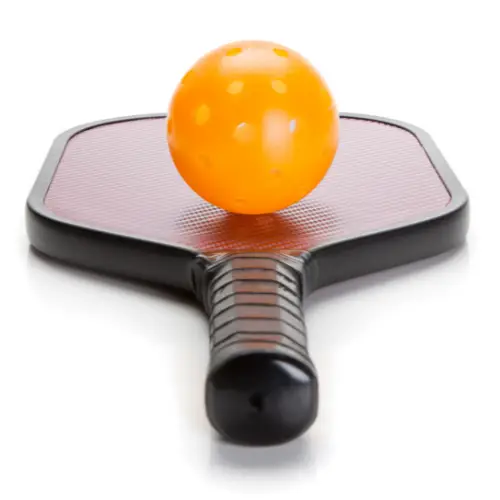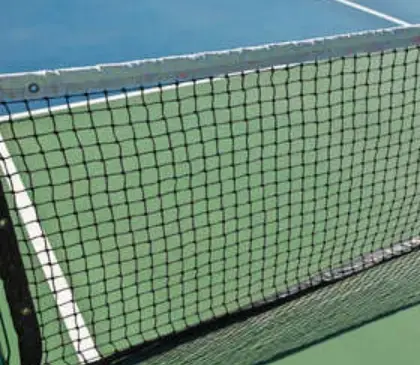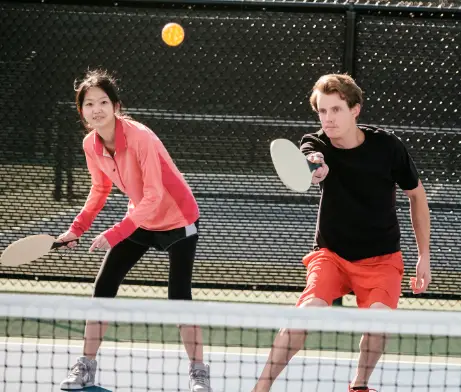A backhand in pickleball is a shot where the player hits the ball with the back of their paddle while facing away from the direction they are hitting the ball. This shot is often used to hit balls that are out of reach or that are coming at the player from an awkward angle. It is a useful shot for players who want to keep their opponents off balance and who need to cover a lot of courts quickly. To execute a backhand in pickleball, the player should grip the paddle with both hands, bend their knees slightly, and swing their arm across their body while keeping their elbow close to their side. The ball should be struck with the back of the paddle, using a smooth, sweeping motion.
How Do You Use The Backhand In Pickleball?
To use the backhand in pickleball, follow these steps:
- Start with your feet shoulder-width apart, facing the direction you want to hit the ball.
- Hold the paddle with your non-dominant hand on the top and your dominant hand on the bottom.
- As the ball approaches, swing your arm and paddle behind your body, pulling the paddle back slightly to generate power.
- As you make contact with the ball, use your dominant hand to snap the paddle forward, hitting the ball with the face of the paddle.
- Follow through with your swing and move your feet to get into position for the next shot.
- Practice using your backhand on both the forehand and backhand sides of your body to become more versatile in your play.
What Are Common Backhand Mistakes In Pickleball?
The backhand is one of the trickiest shots, especially for beginners. Many gamers abhor it so much that they really try to stay away from it. Naturally, this means they are hindering their pickleball skills and lowering their potential for improvement.
But if you have trouble with it or just want to improve, then this post is for you. Here are the top 5 backhand errors that pickleball players make most frequently.
Mistake #1 – Slapping
Slapping at the ball instead of aligning their body to perform a full backhand swing is one of the most frequent errors players make, if not the most frequent.
Slapping the ball can lead to mishits and put too much stress on your elbow and shoulder, thus doing so is a mistake.
Mistake #2 – Separation of Arm From Body
To separate your arm from your torso, let your lead elbow hang out in front and point downward rather than tuck it in. As seen in the image above, there is a space between the body and the elbow on the left. There is no gap on the right, and the elbow is coiled and poised to launch a powerful backhand shot.
Mistake #3 – Not Enough Paddle Head Drop
Having good technique implies swinging with a fluid, unhurried motion. Power should emanate from all throughout the body, not just the arms and wrists. You must lower your paddle head (just like you would on a forehand) and swing from the bottom up to accomplish this with the backhand.
Mistake #4 – Incorrect Use of Non-Dominant Arm
Your non-dominant arm helps shots have the greater force and acts as a counterbalance for your body, which improves balance.
Think about observing someone navigate a balance beam. Do they support themselves by lifting their arms up instead of walking stiffly with them at their sides? They usually raise their arms. Now picture the arm you don’t swing when you hit a pickleball. How does it work? You most likely use it, even if you’re not meaning to, for the same reasons.
Mistake #5 – Eyes Off Contact Too Soon
Have you heard the saying, “The body moves where the eyes are looking”? When we take our eyes off a shot too fast, our bodies can go forward and up, which can cause the paddle to jolt just a little bit. In essence, that is what happens in this last error.
Our eyes jerk up to see where the shot goes as soon as contact is made, which leads us to miss the ball.
What Are Some Pickleball Tips For a Consistent Backhand?
Tip #1: Grip
Starting with a solid foundation is perhaps the greatest approach to improving any shot, whether the forehand or the backhand. In other words, start with your grip. Some players’ grips make it more challenging to execute a reliable backhand. When making the majority of your shots, especially the backhand, the continental grip is the greatest method to hold your paddle.
Tip #2 – Dink Groundstroke
Dinking is one of the most frequent uses of the backhand. Standing at the kitchen line (non-volley zone line) and practicing back-and-forth dinking with a partner while only using your backhand stroke is a terrific exercise.
You’ll begin by getting into a fantastic backhand position. Your feet should be shoulder-width apart and parallel to the net as you stand. Hold your paddle with the rear of the face facing the net while using the continental grip, bending your knees just enough so that the top of the paddle is around them.
Tip #3: Change your course
We want to position ourselves at the NVZ line, similar to our last suggestion, and practice dinking the ball to someone (or against a wall). But we’ll practice striking the ball at an angle rather than just straight ahead. Practice navigating from left to right, then back to left.
The objective of this drill is to train only to lift the paddle into the ball with your shoulder and not your wrist or elbow. Keep your paddle in front of you and avoid letting it slide below your knee as this backhand shot requires it.
Tip #4 – Stay Parallel to NVZ
When backhand dinking, you shouldn’t move much of your body. It’s not only bad manners; it can also create a strategic dilemma by making it simpler for your opponent to shoot and leaving more room for their return to go through. Keep your body parallel to the NVZ line instead. If you need to shuffle to the new location, try doing it from side to side.
Simply keep your feet shoulder-width apart and shuffle them in unison in a single direction. It resembles more of a hop than a step.
Conclusion
In conclusion, the backhand is a crucial shot in pickleball that requires skill, technique, and practice to master. It is an effective way to return shots to the opponent’s backhand side of the court and can be used in various situations, such as when the ball is high or when the player is out of position. The backhand can be executed with either a forehand or backhand grip and can be modified with different strokes, such as a slice or topspin, to add variety and deception to the player’s game. To improve the backhand, players should focus on maintaining proper body positioning, using the non-dominant hand to guide the racket, and generating power and control through the legs and core. With consistent practice and proper execution, the backhand can become a valuable weapon in any pickleball player’s arsenal.







